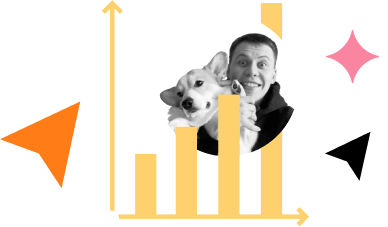Are you making any of these 7 funnel-killing mistakes?

You know what a funnel looks like — a big hole at the top, and a small hole at the bottom. In marketing, we use it as an analogy for the process of gathering a large audience and “funneling them” down into a focused action.
Sadly, most business funnels look nothing like that. In fact, they look more like a colander, with lots of holes leaking opportunities (and revenue) everywhere.
When it comes to funnel-building, there are many pitfalls. Some of them are so treacherous that even the pros will fall for them.
In this article, we’ll:
- share with you the 7 most common funnel-killing mistakes
- identify why they happen
- tell you how you can fix or avoid them
In case you don’t want to read, you can watch our video, which is based on this article 🙂
Mistake # 1: Trying to build an entire automated funnel right away
Why it happens
This is one of those pitfalls that typically affects everyone, but intelligent people are even more prone to fall for it. And that’s because smart people understand the bigger picture and try to plan for everything.
They’ll try to write down EVERY possible scenario for EVERY possible stage of the funnel, in granular and laser-sharp detail, so that they never miss an opportunity.
An old military saying goes, “No plan —no matter how perfect— ever survives first contact with the enemy.”
That’s also true in marketing as well. No matter how accurately you plan your funnel, it’s very unlikely that you’ll get it perfect right away. The perfect funnel is built gradually, over time, and based on constant feedback, testing, and pivoting.
So you might spend six months planning and implementing a funnel, only to discover that you based it on the wrong hypothesis. What will this mistake cost you?
- Months of time and money in teamwork went down the drain
- The exact amount of months in lost revenue because the funnel wasn’t in place
- Even more time and money are spent fixing the broken funnel, which is even harder if you’ve created a complex structure
If those numbers go high enough, your business could take a hit that will be tough to recover from.
How to avoid it
Take small steps at a time.
- Come up with a hypothesis
- Test it by trying to funnel users to the target action.
- Review the metrics
- Keep the ones that work, and discard the ones that don’t
- Repeat the process
Here’s why this approach works best.
- You’re taking small risks, so the losses are minimal. At the same time, once you’ve proven a hypothesis, you just fire and forget — it will keep working and bringing in the revenue. Small risk — big reward.
- You’re using an agile approach, which allows you to pivot quickly and build rapidly on a solid foundation.
- You’re generating revenue right away, so the building process is self-sufficient.
Mistake # 2: Segmentation for the sake of segmentation
Why it happens
You hear it all the time.
“Segmentation is the key to having the right message-to-market match”.
And it’s true… if you segment the right way.
If you just go by gender, age, geography, interests, and so on, without understanding how that segmentation will bring added value to your customers, it will all be for nothing.
How to fix it
Base your decisions on the data that matters.
The goal of your segmentation should be to make offers that make sense to your customers, and increase conversion towards specific goals based on analytics. Don’t forget to evaluate the ratio of costs and emissions to make sure the exercise is a profitable one.
Mistake # 3: Testing on small segments and working with small numbers
Why it happens
This ties in with the first point — building a complete funnel from the start.
The problem is that testing hypotheses on small segments can give you badly skewed results and throw you off track in the long run.
By the time you notice, you’ll have sunk a ton of time and money into a dead-end road. Not good.
How to fix it
Start wide. Figure out common values and common messages that apply to wider segments, even if it means using all of your users.
The larger the cohort, the sooner you’ll be able to see whether the hypothesis makes sense or not.
Once you’ve found one that makes sense, you can start testing similar hypotheses on narrower segments and getting more granular.
Mistake # 4: Ignoring basic mathematics
Why it happens
Numbers — some people love them, some people hate them.
Whatever your opinion, the fact remains that without numbers, everything we do is doomed to fail.
You could have a fantastic, state-of-the-art funnel, but you won’t see much benefit if you’ve worked out the numbers you need to get the desired result.
How to fix it
Think ahead. Educate yourself on industry conversion benchmarks.
What kind of results is it sensible to expect? How is your funnel performing in comparison to those benchmarks? And are you getting the kind of ROI required to justify it?
If you’re ready to give this area of your business the attention it deserves, we have a few recommendations.
Useful link:
Evan Miller Calculator — Helps you to understand statistics, evaluate hypotheses, and calculate the required sample size for achieving a desired result.
Mistake # 5: Testing buttons, not values
Why it happens
It’s easy to get lost in the latest “Secret Tactic for getting 275.2X conversion rates OMGGG!!!” being published on every internet marketing blog out there.
Yes, experimenting with UX auto-messaging, changing the location of buttons, tweaking the colors, and other tricks can boost your conversion. But if you get too hung up on these things, they’ll consume a TON of your time without adding any real value to your customers.
The truth is that principles are more important than tactics. And if the foundation is wrong, no amount of changing button color/location will make it right.
How to fix it
During the first stages, experiment with the things that REALLY matter, such as pricing experiments.
Focus on understanding why your customers buy your product and what problem it solves for them. With this knowledge, you’ll know which values to leverage for maximum traction while you continue to experiment with minutiae-like button colors.
Mistake # 6: Wasting developer resources
Why it happens
Developers are a rare, valuable and expensive commodity.
Sometimes, we have a fantastic idea (at least we think so), and we rush to the almighty developers to turn it into the perfect reality. And then we’ll also pull in the design team, the UX experts… everything but the kitchen sink.
But what if this great idea turns out not to be so great after all?
Right. Lots of money down the toilet. And grumpy devs.
How to fix it
Turn off your inner perfectionist, and implement a “minimum viable version” of your hypothesis first.
Do it yourself, using the many tools available out there.
That’s why we built Dashly. We wanted to give you a tool to quickly implement your plans with ready-made scripts, easy-to-use pop-up builders, and a wide choice of templates.
Get your minimum viable test off the ground first. Prove that the little chick can fly. Then bring the team to build a jet engine and take it to Mach 20.
Mistake # 7: Trying to reinvent the wheel
Why it happens
You have a unique vision, and nobody can take that away.
But having a unique vision doesn’t mean you need to reinvent everything connected to it. Maybe you WILL need to do that eventually. But if you try to do it too soon, without having a proper foundation, you’ll simply be throwing money away, just as we mentioned in the previous points.
How to fix it
Look around you first.
Pay attention to how others have already solved similar problems. Learn valuable lessons from other people’s experiments and failures, and capitalize on their successes.
Don’t just look at people in your industry. There are valuable insights to be learned from anywhere, including areas that have nothing to do with your type of business. You’ll be surprised how sometimes the simplest or most counter-intuitive actions will bring the best results.
We’re not saying you should go out there and do your thing. But a tried-and-tested formula can carry you a very long way.
If you’re interested in how other businesses (similar and different from yours) have done this effectively, check out our Dashly case studies. There are some fantastic insights in there that you can start using in your business today.
Read also:
- Acquisition funnel marketing: Grow customer conversions at each step of user journey
- Top 13 follow up email software to elevate your email marketing strategy
- 10 best predictive lead scoring software to boost your sales funnel
- Guide to sales funnel optimization: best tips, tools, and common pitfalls
- 10 inspiring sales funnel examples to boost your business growth






![13 growth hacking examples tested by Dashly experts [+46 free templates]](https://www.dashly.io/blog/wp-content/uploads/2023/05/Growth-hacking-examples-to-inspire-your-team-720x317.png)